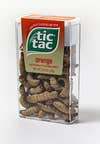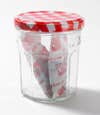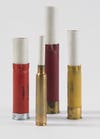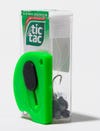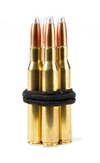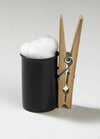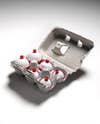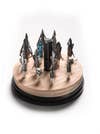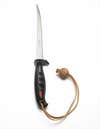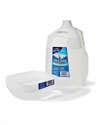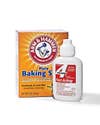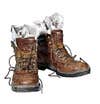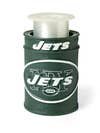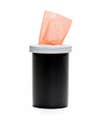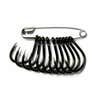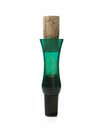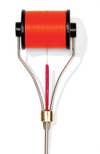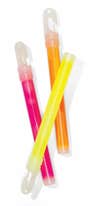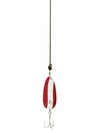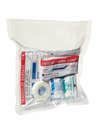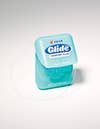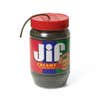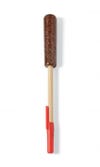We may earn revenue from the products available on this page and participate in affiliate programs. Learn more ›
Keep Bait in a Tic Tac Box
For a really convenient waxworm dispenser when I’m ice fishing, I keep them in a Tic Tac container. The case probably holds about 30 waxworms. Plus, it’s easy to open and shake one worm out at a time without having to take off my gloves._ — Carl Dixon, Bethalto, Ill._
Start a Fire With Pencil Shavings
When I have trouble finding dry tinder for a fire, that’s when I reach for a couple of the secret weapons that I keep inside my survival kit: a pencil and pencil sharpener. All you have to do is sharpen the pencil (dead pine also works), and collect the wood shavings to use as dry tinder. The pencil shavings light easily. — Ron McLane, Thomasville, Pa.
Carry TP in a Tin
One problem I come across during hunts is when Nature calls, and I have no toilet paper. So I started carrying an Altoids tin stuffed with TP, plus matches or a lighter so I can burn it. I like to keep some parachute cord and a small pocketknife in the tin, too. I guess you could say it’s a survival kit in more ways than one. — Ryan Adam, Harper, Iowa
Make an Inescapable Mouse Trap
Here’s how to catch mice that steal the bait from a trap without setting off the trigger: Tie some yarn onto the trigger, leaving the cut ends about 1⁄4 inch long. Roll the ends to make them fuzzy. Work some peanut butter into the yarn and set the trap. The bait is tougher to get out of the yarn, and the mice will be more aggressive trying to get at it. — Richard J. Moncsko, Wilmington, N.Y.
Mark A. Clark’s tip for protecting toilet paper from mice involves a coffee can and a bit of string.
Get More Life Out of Hand Warmers
More times than I can count, I’ve decided against opening a pack of chemical hand warmers because I knew I’d only use them for an hour or so and I didn’t want to waste them. But after an experiment, I’ve found a way to preserve used ones. I placed two partially used hand warmers inside an airtight container for a week. When I took them out, they still had some heat left. Oxygen is needed for the chemical reaction to work, so cutting off the air supply helps them last longer–and saves you a bit of money. — Robert R. Salter, Libby, Mont.
Craft Your Own Spool Dispenser
Here’s how I turn my spools of line into handy dispensers: First, cut a strand of elastic that’s the width of the spool and long enough to stretch around it. Make a loop with the elastic by gluing each end along the sides of a plastic bead (available at any crafts store). Next, cut a piece of heat-shrink tubing a tad larger than the bead. Slide the tubing over the bead and shrink it with a blow-dryer. Finally, thread your line through the bead and cover the spool with the elastic. Now you can pull out line while keeping it wrapped tightly on the spool. — John J. Matousek, Owosso, Mich.
Make On-the-Go Repairs With a Glue Stick
A glue stick offers countless solutions to problems encountered outdoors–patching a hole in your canoe, repairing fishing-rod tips, reattaching arrow nocks. I poke a hole through one end with a heated paperclip, and attach it to the key ring on the emergency compass in my survival kit. That way, I know it’s always there. When I need to make a repair, I just heat the end of the glue stick and apply where needed. _ — Ken Holtz, Belleville, Mich._
Save Your Shells—and Memories
Over the years, I’ve saved the cartridges and shotgun shells from some of my hunts. Reminiscing, I realized I was starting to forget which one was which. To add a new dimension to my memories, I write down the date, weather conditions, and who I was hunting with on a small piece of parchment paper. I roll it up, place it inside, and save it as a keepsake. — Darryl Orr, Independence, Ky.
Get Rid of Coffee Stains in Your Thermos
I buy generic-type denture cleanser tablets from the store (they usually come in a box of 90), and use them to clean my stainless-steel thermos. Fill up your thermos with warm water, and add a couple of the tablets. Allow them to fizz for about 15 minutes. Dump out the solution, and clean with soapy water and a bottle brush, then rinse. You may need to repeat the process for heavy stains. — Greg Locy, Canonsburg, Pa.
Make a Tackle Box That Fits in Your Pocket
An empty Tic Tac box makes a great miniature tackle box for baitfishing. First, I crazy-glued a small, circular-shaped box cutter (for cutting line) to the side of the con-tainer. Then I filled it with hooks, snap-swivels, and weights. Carry it in your pocket, or your glove compartment. _ — Ray Koch, Bullard, Texas_
Add a Fire Starter to Your Knife
A small replacement flint–the kind used with a striker that you squeeze to light a blowtorch–makes a backup emergency fire starter. I drilled a 1⁄16-inch hole in the threaded end of the flint, passed a small split ring through the hole, and attached it to the lanyard hole on my Swiss Army knife. Just strike your knife against the flint for a spark. This wouldn’t be my first choice for starting a fire, but it works, and a backup never hurts. –Mark Crowe, Grande Cache, Alberta
Use a Cap Gun to Train a Gun Dog
You could train your dog with one of those expensive starter pistols, or you could use what I’ve found to work: a children’s cap gun. I have one that looks like a revolver and takes the circular caps; it worked perfectly. Plus it saved me money on the starter gun, not to mention what I would’ve spent on blanks. –Mark Hurtado, Whittier, Calif.
Keep Bullets Quiet In Your Pocket
During whitetail hunts, I use one of my wife’s hair ties to keep my shells from rattling in my pocket. I wrap the elastic band around four cartridges. This stops the cartridges from rattling around and possibly spooking the deer. I have been able to sneak up on quite a few whitetails using this method. –Matt Scott, Clymer, Pa.
Keep Doe Pee In a Film Canister
Take a film canister, glue a clothespin to the outside, and stuff a cotton ball inside. Pour in your doe urine, and let the cotton absorb the urine. Then, simply clip the canister to a tree limb near your treestand. After the hunt, simply snap the cap back on and hit the trail. This has worked for me more times than I can count. It’s small enough to keep in your pocket, and it won’t spill. –Chris Coble, Lobelville, Tenn.
Keep Your Bobbers In One Place
If you have loose bobbers rolling around your tackle box, put them in an egg carton. They will not roll around and will stay in place with the cover latched. –Shawn Hanley, Cashton, Wis.
Store Broadheads In a CD Container
An empty 50-count CD case is a great place to store broadheads. First, cut a 1⁄2-inch-thick piece of cedar in the shape of a CD. Then drill a hole in the middle that’s large enough to fit around the case’s center post. Mark spots on the wood where you’ll want to drill holes for arrow inserts. Drill the holes, and glue the inserts in place. Now, glue the wood to the base of the CD case. Screw your broadheads into the inserts, then replace the plastic cover. –Sam Ratermann, Wichita, Kan.
Turn a Straw Into a Grunt Call
Next time you’re at deer camp, make a bet with your buddies that you can make a grunt call with a straw. Once the money is on the table, do the following: Rip 2 inches off one end of the wrapper and pull the straw out about an inch or so. Poke a hole in one side of the wrapper 2 inches from the opposite end and insert the end of the straw through that hole. Fold the flapping end of the wrapper so it’s standing vertically and blocking the end of the straw. Suck air through the straw. The flap hitting the straw will mimic a grunt. If the flap gets stuck, inhale with less force or move the flap so it’s farther from the end. Collect your winnings. –Casey Russell, Leivasy, W.Va.
Never Dig For Nightcrawlers Again
When I fish with nightcrawlers, I store them the old-fashioned way, in a coffee can filled with soil. I -remove both ends of the can, however, and cover each with a plastic lid. This way, the worms are -always accessible–I never have to go digging to the bottom. –Lowell Harner, Wabash, Ind.
Never Lose Another Fillet Knife
I never have to worry about losing my knife if it falls in the water because I threaded rawhide through the handle, flattened the ends, and attached a large cork bobber. –Chuck Martel, Holyoke, Mass.
Sling a Chum Bomb
An effective way to chum for catfish, trout, and other species is to sling globs of chum with one of those “chuckers” designed to throw tennis balls for dogs. Just load up the cup–I use canned corn or cat food–and heave it. I can get chum out as far as 75 feet this way. –Mark Cerulli, Mashpee, Mass.
Slice Braided Line With a Letter Opener
When I switched over from mono to braided line, I found that my nail clippers just shredded the braid. And scissors were hard to keep at the ready, not to mention dangerous to carry. So I purchased a letter -opener–the type that has the blade safely concealed. This makes a quick, clean cut in any type of line, and it works so well that I threw my nail clippers away. –Edward P. Watcheski Jr., Millsboro, Del.
Make Your Water Bowl Fit the Jug
It’s important to have plenty of water for your dog in the field. To make a handy lightweight bowl, cut off the bottom third of an empty gallon jug. Take another empty gallon jug and fill it with water. The “bowl” will fit snugly over the bottom of the water jug, which makes it convenient to bring both the water and the bowl on a hunt. –Jim Rucker, Lancaster, Ky.
Make a Wind Checker With Baking Soda
Pour some baking soda into an empty, dried-out nasal-spray bottle until it’s almost full, then reattach the nozzle. Just squeeze the bottle and you’ll get an accurate wind reading in the field. –Mitchell Saur, Gaithersburg, Md.
Dry Your Boots With Newspaper
I stuff my boots with newspaper, which absorbs the moisture. Then I keep repeating with dry pages every 45 minutes, and they’re good to go the next day. _ –Marck Schwarze, Elk River, Minn._
Keep a Spool Wrapped Inside a Koozie
An aluminum-can Koozie isn’t just for keeping a cold one cool. To keep a large spool of mono fishing line from unraveling, I tuck it inside a Koozie. I leave a piece of line hanging out, so I can strip off as much as I need without making a mess of the spool. –Michael Willsher, North Branford, Conn.
Make a Waterproof Shell For Your Matches
I rely on an old but still useful tip to keep my strike-anywhere matches safe and dry. I place them inside a spent 16-gauge shotgun shell capped off with another spent 12-gauge shell. This keeps my matches in a compact, rugged, water-resistant, floatable container for whenever I’m ready to use them. –Ryan Arch, Galva, Ill
Make a Golf Club Gaff
You can turn an old golf club into an ice-fishing gaff: Cut off the club head and attach a large fishing hook (bend down the barb) to some stiff wire. Run the wire up the shaft and out the handle. Pull the wire until the hook is snug inside the shaft, and secure it to the grip with duct tape. –Shannon Borer, Big Lake, Minn.
Haul Firewood With a Web Strap
I took a broken 1-inch ratchet strap, cut off the end with the hook, and tied a loop at that end. I use this to gather firewood whenever I’m camping. I just lay the strap on the ground and pile sticks on it. Then I pull the male end through the female end and throw the bundle over my shoulder. I can carry twice as much wood in half the time. –Eddie Crane III, Richmond, Ill.
Make a Handy Container For Surveyor’s Tape
A plastic 35mm film case can be made into the perfect container for surveyor’s tape. Simply cut an X in the snap-on lid and thread some of the tape through the lid from the bottom. Then stuff as much tape as you can inside the case. I use the tape to mark trails, and the container is small and fits comfortably in a pocket. –Joe Nowak, South Holland, Ill.
Improve Your Fly-Line Memory With a Coffee Can
If I know I won’t be flyfishing for a straight month or so, I wrap the first 40 feet of my fly line around a large coffee can. The diameter of the can prevents tight curls from forming in the line, which helps it lie straight on the water the next time I go fishing. –Stephen Miller, Riverton, Utah
Organize and Separate Fishing Hooks With Safety Pins
Use safety pins to keep the fishing hooks in your tackle box organized. I got tired of hooks getting mixed up, so now I use safety pins to keep them separated. Simply feed the point through the eye of the hooks. A lot of hooks fit on one pin, and it’s an easy way to keep the different kinds sorted. –Stephen Elliott, Visalia, Calif.
Cork Your Calls to Keep Them Clean
Here’s a great reason to save the cork from a bottle of wine: To keep dirt, dust, and grime out of my duck, goose, owl, and crow calls, I plug them with wine corks. It’s simple, cheap, and really does the job well. –Nathan Miller, Wexford, Pa.
Avoid Thread Tangles When Fly Tying
When tying flies, I used to have trouble with a thread loop forming around the spool as I made wraps with the bobbin. The loop would then come off the spool and become wrapped around one of the bobbin arms. So I took a plastic coffee stirrer-straw and inserted it in the back of the bobbin tube, extending almost 1⁄2 inch to the spool. This keeps any slack from forming and eliminates thread tangles. –Richard Rehm, St. Louis, Mo.
Mark a Blood Trail With Glow Sticks
On deer hunts, I always keep a few glow sticks in my pack. If I down a deer at dusk and it gets dark while I’m tracking it, I’ll tie the glow sticks to branches to mark the blood trail. Doing this makes it much easier to find my way back once the dragging starts. Just be sure to retrieve the glow sticks on your way back out. _ –Jason Coyle, York, Pa._
Turn a Lure Into a Tree-Stand Retrieval Tool
I use a barbless Dardevle Spinnie to retrieve items that I drop from my treestand. To make it, just tie some nylon cord to a split ring at the top of the lure. I store mine in a plastic bottle with cotton balls to keep it from rattling. –Ron Mattic, Beaver, Pa.
Vacuum-Seal a First-Aid Kit
I use my vacuum sealer for more than just venison steaks. Bandages, gauze, and other first-aid items can be sealed and shrunk inside a small plastic bag, keeping them dry and giving you more space in your pack. This also works great with matches. –Jeff Orr, Stony Plain, Alberta, Canada
Spool Monofilament in a Floss Dispenser
I wrap monofilament around the small spool inside an empty dental floss dispenser. This makes for a handy mono carrier, and the built-in cutter works great for snipping leader. –Donald Wier, Lititz, Pa.
Carry Duct Tape Minus the Bulky Roll
Duct tape can be a lifesaver. But carrying an entire roll takes up valuable space inside a backpack–and you probably won’t need that much tape. Instead, I wrap a couple feet around a Bic lighter, so I always have a short supply inside my pocket. If you need more, you can also wrap some around a Nalgene bottle. –Ben Wagner, Bozeman, Mont.
Hunt In Stealth Mode With Candy
On still-hunts for deer, I used to worry about whether I was walking too fast. So to make myself slow down, I started keeping a half-full Tic Tac box in my pants pocket. This way if I can hear the candies jiggling, I know I need to slow the pace. –Tom Charlton, Muscatine, Iowa
Keep Parachute Cord Tangle-Free
The best way to store 550 parachute cord is in an empty plastic peanut butter jar. Drill a 3⁄16-inch-diameter hole in the lid. Stuff the cord into the jar (careful not to overlap it), and thread the end about 4 inches through the hole you made. Screw the lid back on, and pull out as much cord as you need. Kiss tangles good-bye. –Jim Ratermann, Tipp City, Ohio
Track Your Kill With a Compass
Whenever I hunt deer from a treestand–with either a bow or a rifle–I always keep a compass handy. After taking a shot at a deer, I keep my eyes fixed on the last spot where I saw it, then I take the compass bearing in degrees on that location. I climb down and follow the compass bearing to the blood trail. This increases my chances of recovery in thick cover or as foul weather approaches. –Thomas Paquin
Protect Your Turkey-Call Strikers With Pen Caps
To ensure that I get the best sound from my slate turkey call, I keep a pen cap on the tip of the striker whenever I’m not using it. The cap guards against the oils on my hands or anything else that could harm the tip and compromise the friction of the striker against the slate. –Terry Stoddard, Martville, N.Y.
A Spill-Free Way To Fill Your Chain Saw’s Oil Tank
Instead of recycling that used dish-soap bottle, rinse it out and fill it with oil. Then use it to refill the chain oil tank on your chain saw. When your tank needs reloading, squirt the oil into the tank. There is no need for a funnel, and there is never a mess to clean up. –Clay Pennington, Asheville, N.C.
Keep Your Salmon Eggs On Your Hook With Salt
Have you ever wondered how to keep from losing your fresh salmon-egg bait to a strong current? Simply empty your jar of eggs on a saucer and sprinkle lightly with table salt. Return them to the jar and go fishing immediately. Your eggs will seem to have become “rubberized” and will stay on the hook. –John Minerly, via e-mail
Some of the best hunting and fishing tips that appear in Field & Stream every month don’t come from the editors or writers at the magazine. They come from you, the readers. We get so many good tip submissions, in fact, that it’s sometimes tough to select the winners for our “Reader Tips” section. But there was never any doubt about the tips in this gallery.

